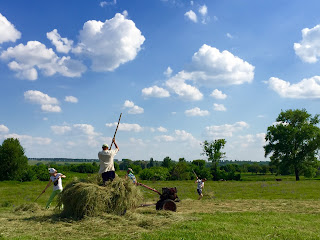Steppe Agro Holding, a company belonging to AFK Sistema, is considering building dairy farms in Moscow, Rostov and Stavropol regions, Chairman of the holding’s Board of Directors, told reporters on Wednesday.
The Russian agricultural watchdog, Rosselkhoznadzor, continues to impose restrictions on Belarusian dairy imports which is possibly related to the previous news story. The decision is officially attributed to sanitary requirements, while Minsk accuses Moscow of pursuing political purposes.
It looks like Russia will not cancel the embargo on tomato imports from Turkey any time soon, "We may authorise [import of tomatoes from Turkey] at some time but definitely not in years ahead," the Russian Minister of Agriculture is reported as saying earlier this week.
The Kazakhstan Ministry of Agriculture is forecasting a 17-18mmt grain crop this harvest, down on last year’s 20.6mmt crop, and plan to export 8-8.5mmt in the new 2017/18 marketing year. They don’t give a yield forecast for wheat but last year they produced 16.5mmt of wheat so it’s likely to be pro-rata, although the current ag policy is to reduce reliance on wheat.
(If we can raise funds we will go to Kazakhstan to have a look at how the harvest is progressing and feedback to our crop tour subscribers, drop me a line if you would like to contribute.)
Harvest officially started in Ukraine yesterday, with the first 2,500mt of winter barley cut in Kherson and Odesa oblasts with an average yield of 3.14mt/ha.
Ukraine exported 43.0mmt of grain during the current marketing year, to June 21 2017, including 17.3mmt of wheat, 5.3mmt of barley, and 20.1mmt of corn.
Yesterday, Ukraine opened a new 100,000mt elevator complex on the Black Sea port of Mykoliaiv with the capacity to handle 400,000mt per year, assuming they have the train waggons to get it there.
In 1942 Ukraine had 12,000-grain waggons, today they have 3,000 and haven't bought a new one since 1986.










































